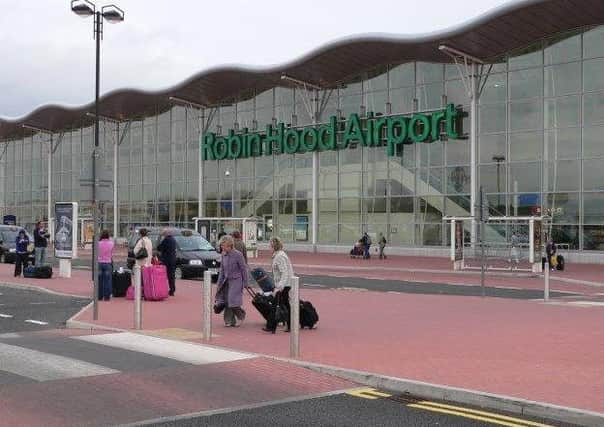YP Comment: An airport with a sky-high ambition '“ Doncaster leads by example


This is the central conclusion which can be drawn from the newly-launched blueprint that proposes the construction of a special spur off the East Coast main line so trains can service the airport.
What a contrast to last week’s announcement of a new parkway station being built a mile from Leeds Bradford Airport on the Harrogate line, with the promise of a bus link to the main terminal. Three distinct differences between the rival approaches are plain.
Advertisement
Hide AdAdvertisement
Hide AdFirst accessibility. Unlike Leeds Bradford where surrounding roads are gridlocked, Doncaster Sheffield’s first class road links would be complemented by some rail services operating on the main line between London and Scotland.
Next funding. While the modest Leeds scheme is reliant on public money previously earmarked for the city’s defunct trolleybus scheme, Peel Group – owners of Doncaster Sheffield Airport – hope to acquire significant private sector investment and the possibility of Government support.
Finally the national spin-offs. While Leeds Bradford will never be more than a regional airport, the former Finningley airfield boasts a runway which is long enough to handle the world’s largest aeroplanes and, in doing so, reduce the amount of passenger and freight traffic passing through the South East – the reason why there’s so much controversy over Heathrow’s expansion.
Advertisement
Hide AdAdvertisement
Hide AdIt remains to be seen whether the Doncaster Sheffield plan takes off, but at least its executives can’t be faulted for showing sky-high ambition – a laudable trait that has been sadly lacking when it comes to tackling Yorkshire’s myriad transport challenges.
Our debt of duty
EVEN though pensioners are more likely to vote than other demographics, successive Chancellors have treated the issue of social care with contempt by putting short-term calculations before long-term needs. George Osborne bought himself some wriggle-room when he said that town halls could impose a two per cent levy on council tax bills – the scheming inference being that it was councillors and not the Treasury raising the tax threshold – while Theresa May reportedly forbid Philip Hammond from raising the issue in last month’s Autumn Statement so not to alienate ‘just about managing’ households.
This uncertainty is, frankly, unfair to those pensioners dependent on the support of local agencies because of the frailty of their health. Having contributed to the Exchequer’s finances throughout their lives, they now feel guilty for being a burden to the state because of the serial failure of politicians to recognise that care costs will increase – and not fall – as an inevitable consequence of an ageing society. If this country is to honour its debt of duty to senior citizens, more money will have to be found – whether out of general taxation or an increase in the council tax surcharge.
In finalising its approach, the Government will be failing Britain if it does not set out a long-term funding plan – the inability of NHS hospitals to discharge elderly patients stems, in part, from under-investment in community care. At the same time, Ministers need to acknowledge that taxpayers expect a greater share of their money to be spent on these vital services rather than being frittered away by bureaucrats with no sense of urgency.
A town’s triumph – Hebden Bridge beats the odds
Advertisement
Hide AdAdvertisement
Hide AdNATIONAL recognition for Hebden Bridge at the Great British High Street Awards could not have been more deserving. Left devastated by last December’s floods, and in despair at the Government’s betrayal of the forgotten Calder Valley, its resurgent community spirit helped property owners to come to terms with this disaster.
Challenges remain, not least the implementation of Calderdale’s flood relief plan and the still unresolved issue of affordable insurance after David Cameron’s past promises proved worthless. But these difficulties would even be greater without the resilience shown by local residents – and the conscious decision of so many visitors to purposely support Hebden Bridge in the town’s hour of need.
Like Pateley Bridge which has also been honoured, Yorkshire is blessed to be home to so many distinctive market towns and villages which are all rightly proud of their individual identities. Long may this be the case – they will only flourish with continued public support.